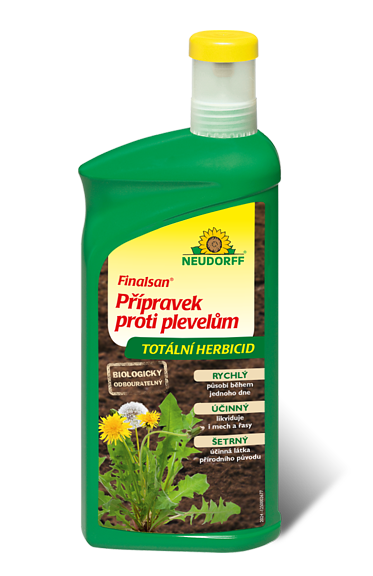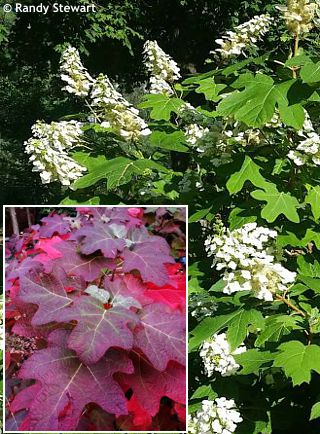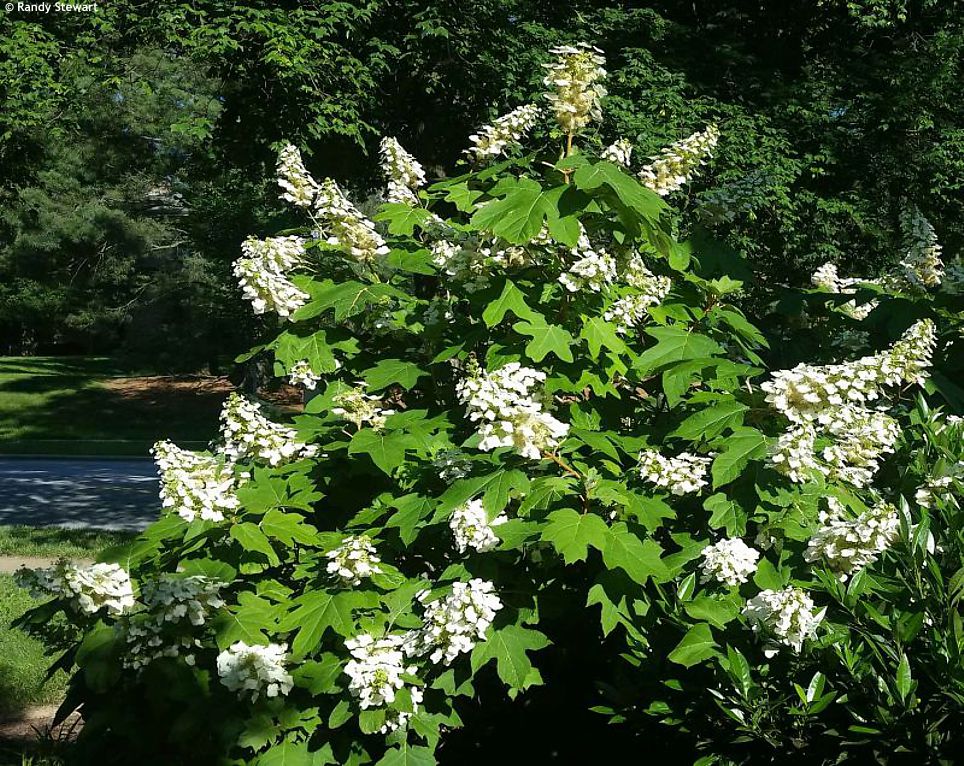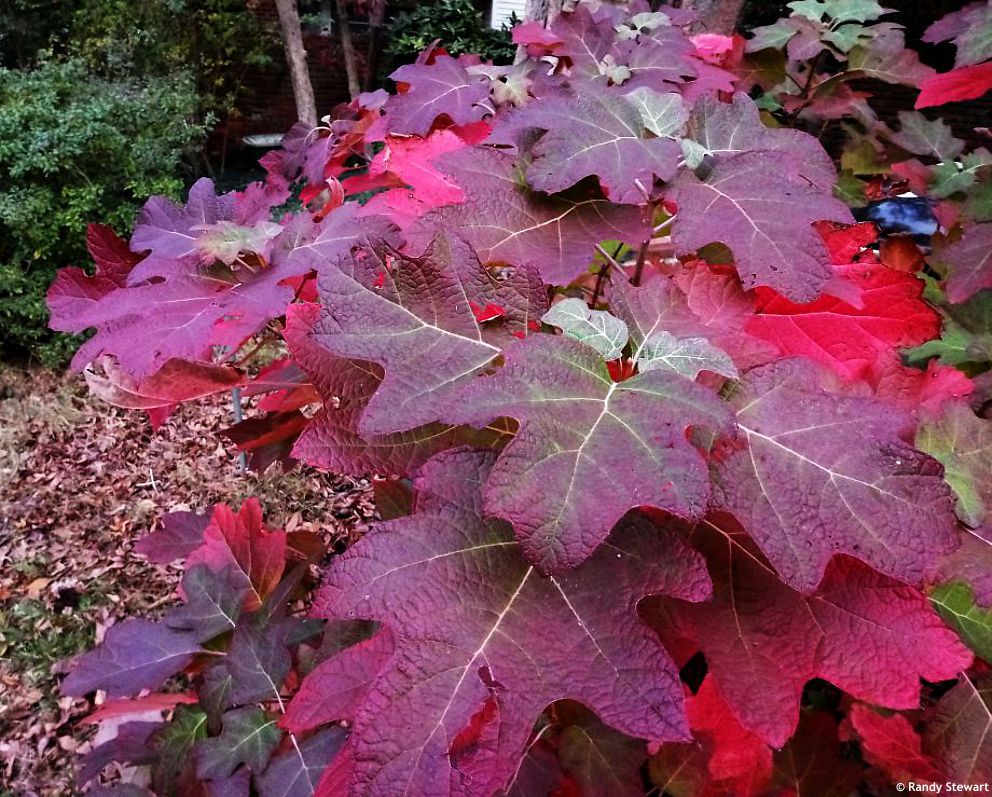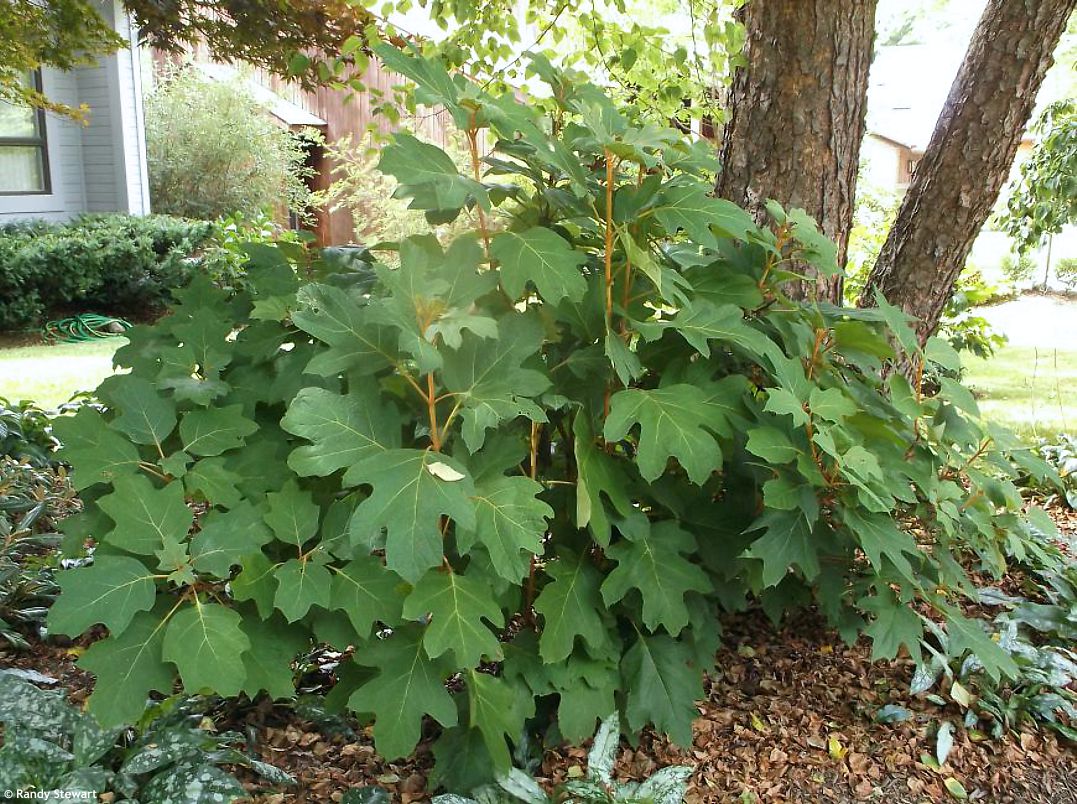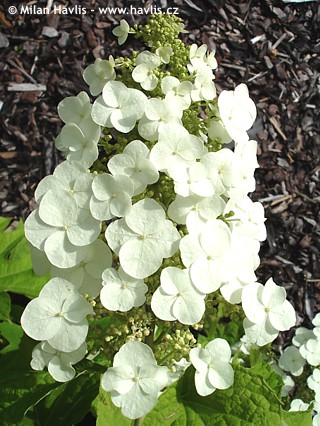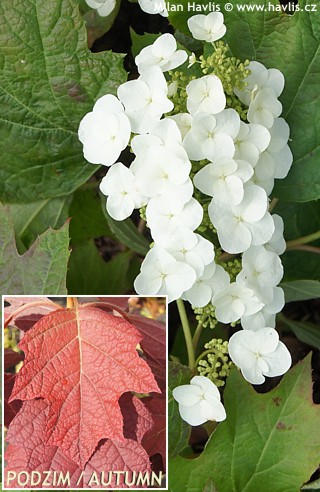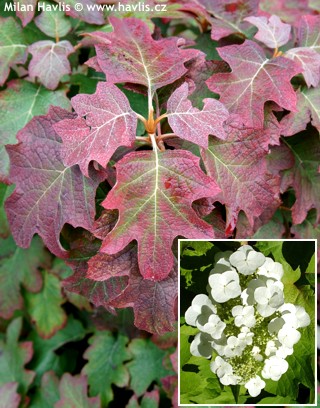Hydrangea quercifolia SNOW QUEEN ('Flemygea') oak-leaved hydrangea
Snow Queen is an oak-leaved hydrangea from Princeton in New Jersey, USA. It was bred and introduced by nurseryman William Flemmer III in 1979. It was distinct from the species by its large flowers of pure white colour and somewhat more upright habit. It was patented under PP4,458 and may not be reproduced without license.
Snow Queen oak-leaved hydrangea produces very large 20-25 cm long and 10-12 cm wide panicles, composed of 50-60 individual flowers, most of which are sterile making the inflorescence look full and compact (fertile flowers are not showy). They come out in mid June and last for as long as 6 weeks. After that they do not usually fade out but take on pink shades which develop into slightly deeper purple red shades towards the autumn.
The leaves are deciduous, soft green as they emerge and deep green when mature, beautifully lobed like oak leaves, and turning vibrant shades of carmine red and deep burgundy red in autumn. The shrub is constructed from strong, upright branches which hold the flowers always in upright position in full bloom. They get pendent only in late summer when changing the colour to pink. It keeps a compact shape and remains bushy without pruning. Still, if you need to prune or shape the plant do so immediately after flowering because it flowers on last year’s wood.
Oak-leaved hydrangea comes from moist and sometimes partly wet sites along river banks and streams, therefore it will need similar conditions in the garden. Grow it in constantly moist soil in full sun or part shade, it can even take temporary waterlogging. It is not fussy about soil pH or quality – it will grow even in clay and compacted ground, but more slowly. It is fully hardy to about -27°C (USDA zone 5b).
Last update: 22-02-2012






























